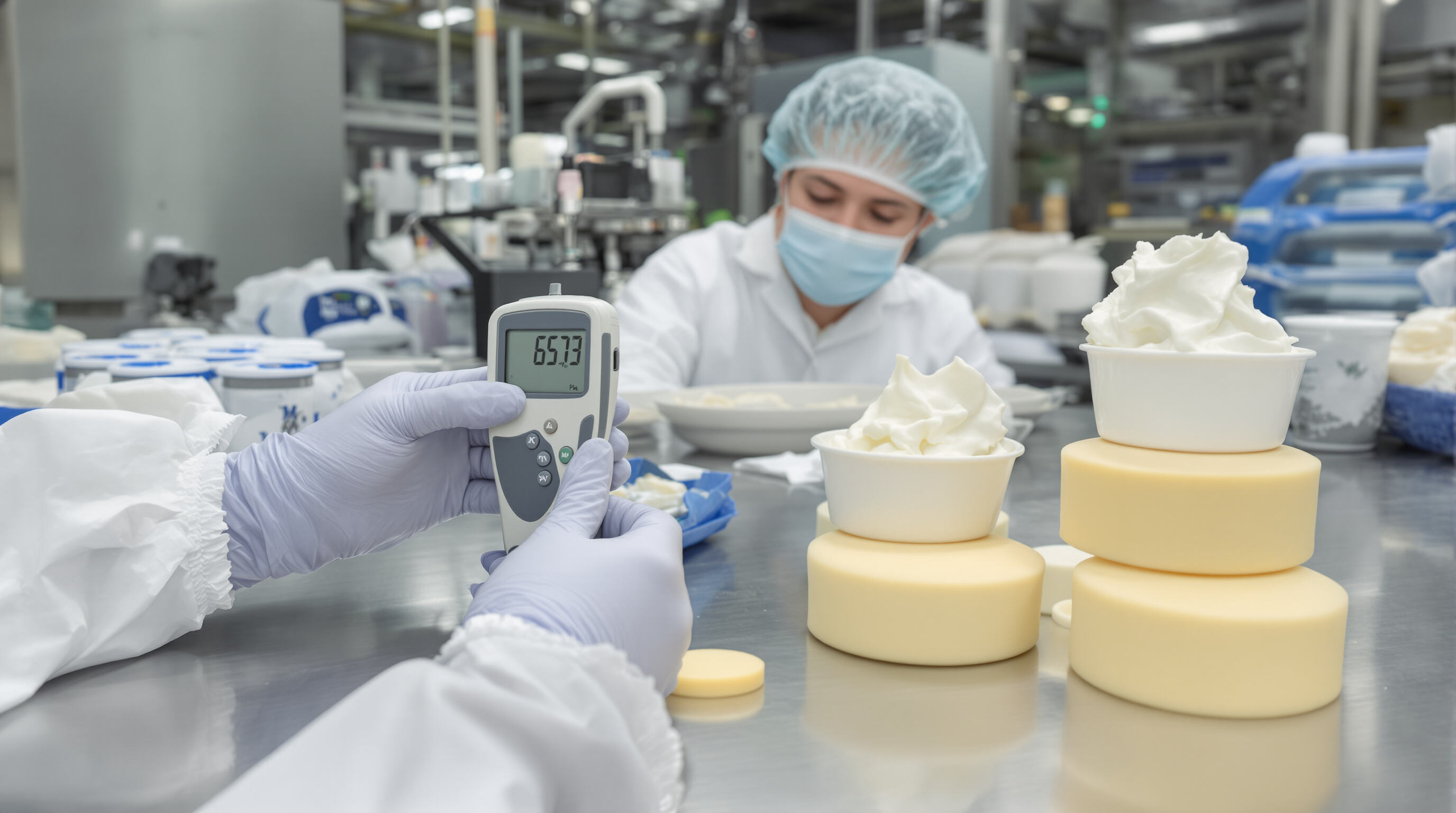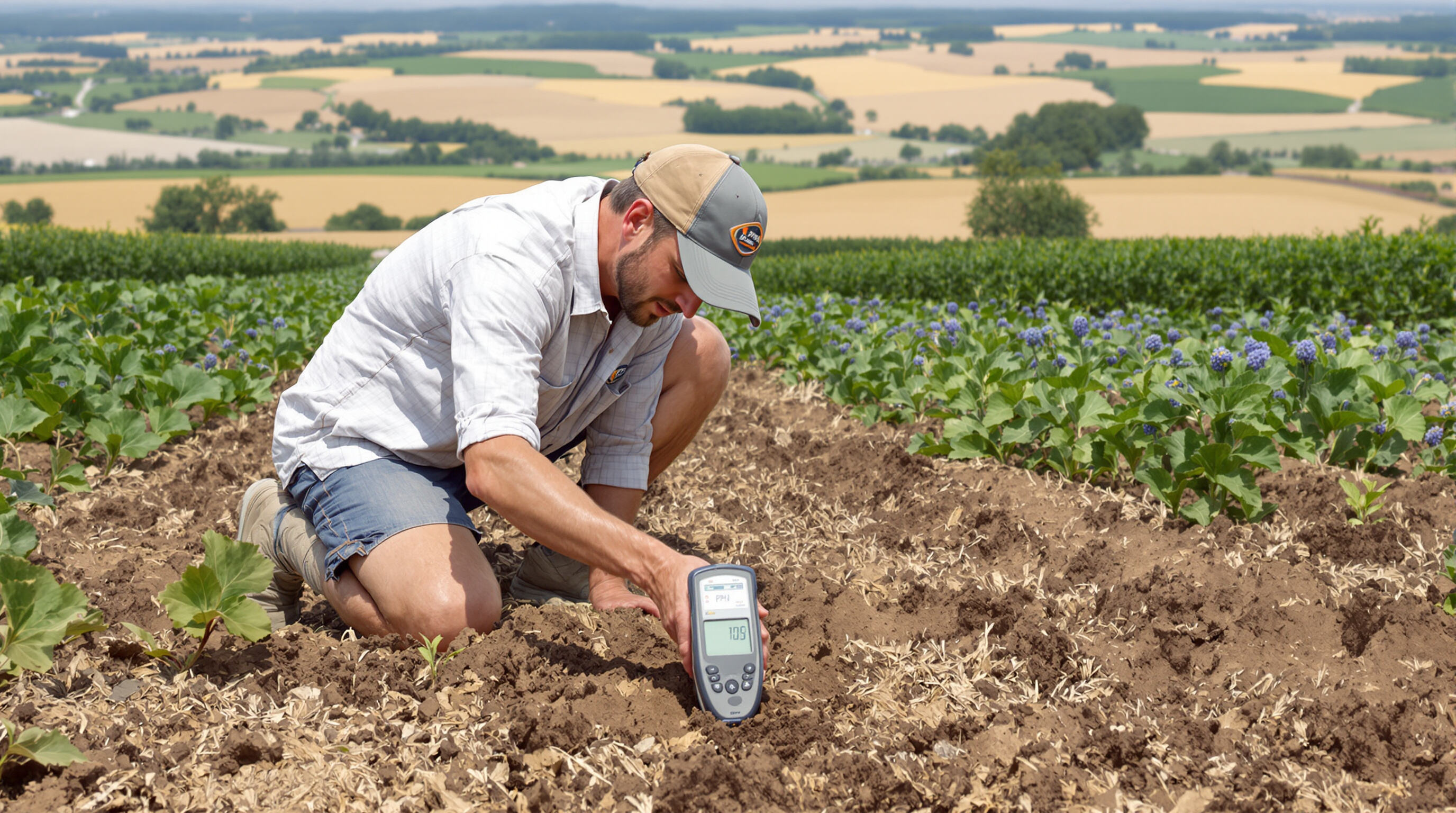How pH Meters Work and Why They Matter Across Industries
How pH Meters Work: From Electrodes to Digital Readings
Modern pH meters measure acidity using three primary components:
- Glass electrode: Detects hydrogen ion activity in solutions
- Reference electrode: Maintains stable voltage for comparison
- High-impedance meter: Converts millivolt differences into pH values (0–14 scale)
This electrochemical process enables digital precision beyond litmus paper, with laboratory-grade devices achieving ±0.01 pH accuracy. Advanced models now feature automatic temperature compensation (ATC) to counter thermal interference—a critical improvement over early 20th-century systems that required manual thermometers and correction charts.
Evolution of pH Meter Technology in Industrial Applications
From bulky benchtop units to wireless IoT sensors, pH measurement tools have undergone four key upgrades:
| Era | Innovation | Industrial Impact |
|---|---|---|
| 1930s | First commercial electrodes | Enabled food safety standardization |
| 1980s | Portable field meters | Revolutionized environmental monitoring |
| 2010s | Solid-state ISFET sensors | Permitted biopharma sterile line use |
| 2020s | Cloud-connected multiparameter probes | Supports smart agriculture real-time adjustments |
These advancements reduced calibration frequency by 62% in pharmaceutical quality control systems while expanding into extreme environments like molten sulfur pipelines (300°C+).
Why Accurate pH Measurement Matters Beyond Water Quality
A 2023 study across 14 industries revealed 78% of production errors traced to improper pH control, including:
- Cosmetics: pH 5.5 compromises skin barrier function
- Battery manufacturing: Electrolyte pH variance lowers energy density
- Textile dyeing: ±0.3 pH shift changes color absorption rates
Healthcare applications particularly benefit—neonatal ICU blood pH monitoring prevents 23% of metabolic crises annually. As industries adopt stricter ISO 17025 standards, traceable pH calibration protocols now prevent $740k in potential compliance penalties per facility (Ponemon 2023).
pH Control in Food, Pharmaceuticals, and Cosmetics: Ensuring Safety and Efficacy

Ensuring food safety and flavor through pH in processing and fermentation
pH meters play a crucial role in managing microbial activity throughout various stages of food production processes. When making fermented goods such as yogurt, sauerkraut or beer, keeping acidity within specific ranges around 3.7 to 4.6 on the pH scale helps good bacteria thrive while stopping harmful ones from taking over. For cheese makers especially, getting the pH right matters a lot. The ideal range needs to be maintained within about 0.1 points either way to achieve proper texture and taste characteristics. If the readings drift more than half a point away from target values, unwanted microbes start growing instead. This kind of problem leads to significant losses for producers too. Recent industry reports indicate that spoilage issues linked to pH imbalances cost companies approximately $2.6 million every year through product recalls alone.
Optimizing shelf life and regulatory compliance in food and beverage production
For acidified foods such as canned tomatoes, maintaining a pH level below 4.6 is essential according to FDA regulations found in 21 CFR Part 114 to prevent dangerous Clostridium botulinum bacteria from growing. The introduction of automated pH monitoring has made things much safer for food processors. These systems typically hit around 99.7 or 99.8 percent accuracy when measuring pH levels during fast paced bottling operations. This technology cuts down on regulatory problems too many plants face with manual testing methods, slashing violation rates by roughly two thirds according to research published in the Journal of Food Engineering back in 2023. Juice manufacturers particularly benefit from having continuous access to pH readings throughout production. They can adjust preservative concentrations as needed, which helps keep their products fresh longer. Some companies report shelf lives extended anywhere between 30 to maybe even 45 extra days depending on storage conditions and specific fruit types being processed.
pH in drug formulation and stability testing for pharmaceuticals
The way drugs dissolve in the body and how well they work depends heavily on maintaining the right pH levels. For example, insulin needs to stay within a narrow range of about pH 7.0 to 7.8 if it's going to keep its proper shape and function. On the flip side, aspirin actually breaks down much quicker when stomach acid brings the pH down to around 1.5 to 3.5, according to findings from the Pharmaceutical Technology Report last year. Research using accelerated stability testing has revealed something pretty concerning too. Even small changes in pH, just over 0.2 units really, can cause about a quarter of certain antibiotics to break down completely within half a year. This highlights why pharmaceutical companies spend so much time validating their buffer systems before bringing products to market.
Maintaining sterility and meeting FDA/GMP standards with ph meter data
GMP protocols mandate hourly pH checks in cleanroom injection solutions, where deviations beyond ±0.05 pH may indicate endotoxin contamination. A 2023 study of 120 pharma facilities found automated pH monitoring reduced sterility test failures by 41%. Calibration drift detection algorithms now alert technicians to electrode degradation 12–24 hours before audit-critical measurements are compromised.
Formulating skin-safe cosmetics aligned with natural pH (4.5–5.5)
The skin’s acid mantle functions best when cosmetic products stay within pH 4.7–5.8. Cleansers above pH 6.0 increase transepidermal water loss by 34% and irritation complaints by 29% (Dermatology Research 2023). Advanced pH meters assess emulsion stability under varying temperatures, ensuring formulations maintain ±0.3 pH accuracy throughout their 3-year shelf life.
pH Management in Agriculture and Environmental Protection

Soil pH Analysis: Linking Acidity to Nutrient Availability and Crop Yields
The acidity level of soil really affects how nutrients dissolve, what microbes are active, and whether roots grow healthy or not. Take blueberries for instance they absolutely love acidic soil somewhere around pH 4.5 to 5.5. On the flip side, alfalfa does best when the soil is closer to neutral, about pH 6.5 to 7.5, because that's where it fixes nitrogen most effectively. Farmers should know that even a small change in pH, just 1.0 unit difference, can cut down available phosphorus by as much as 80 percent according to USDA research from 2023. That's why many growers invest in good quality pH meters and those handy soil test kits these days. These tools let them see exactly where their fields vary in acidity so they can plan what crops go where better.
Lime and Soil Amendment Strategies Based on pH Testing
| pH Range | Amendment | Application Rate | Effect Timeline |
|---|---|---|---|
| <5.5 | Lime | 2–4 tons/acre | 6–12 months |
| 7.5 | Sulfur | 100–200 lbs/acre | 3–6 months |
| Precision agriculture tools calculate amendment needs using GPS-linked pH data, reducing over-application risks by 35% compared to traditional methods. |
Smart Farming: Real-Time pH Monitoring in Hydroponics and Precision Agriculture
Wireless pH sensors deliver continuous data to irrigation systems, automatically adjusting nutrient solutions in hydroponic setups. Greenhouse operators using real-time monitoring report 22% higher tomato yields through sustained pH optimization (HortScience 2024). These systems integrate with weather forecasts to preempt pH fluctuations from rainfall.
Drinking Water and Wastewater Treatment: Neutralizing Effluents and Preventing Contamination
Municipal plants rely on automated pH monitoring systems to maintain drinking water between 6.5–8.5 pH—critical for controlling pipe corrosion and maximizing chlorine disinfection. In wastewater treatment, pH meters activate chemical dosing pumps that neutralize acidic mining runoff or alkaline industrial discharges within ±0.2 pH units of target levels.
Automated pH Monitoring in Municipal Plants and Rural Compliance Challenges
Cities deploy IoT-enabled pH loggers with 99.9% uptime, but rural areas face challenges: 43% of small water systems lack funds for advanced sensors (EPA 2023). Battery-powered field meters and smartphone-connected probes are bridging this gap, delivering regulatory-grade data at 60% lower cost than legacy systems.
Cutting-Edge Uses of pH Testing in Biotechnology and Medicine
pH measurement has evolved from a basic lab tool to a driver of innovation in life sciences. Modern pH technologies now enable breakthroughs in personalized medicine and real-time diagnostics through three transformative applications:
Biotechnology and Cell Culture: Maintaining Optimal pH for Growth
Bioreactors used in vaccine production and biomanufacturing require pH stability within ±0.1 units to avoid $2.8 million in wasted batches (BioProcess International 2023). Advanced pH meters with ATC maintain mammalian cell cultures at 7.0–7.4, providing real-time alerts for metabolic byproduct accumulation.
Clinical Diagnostics: pH Testing in Blood, Urine, and Other Biological Fluids
Hospital labs perform over 500 blood pH tests daily to diagnose critical conditions:
| Fluid | Healthy pH Range | Critical Threshold | Clinical Implications |
|---|---|---|---|
| Arterial Blood | 7.35–7.45 | <7.2 or >7.5 | Organ failure risk |
| Urine | 4.6–8.0 | Persistent <5.5 | Kidney stone formation likely |
Continuous pH monitoring in ICU patients reduces mortality rates by 18% through early detection of acidosis (Journal of Critical Care 2024).
Emerging Trends: pH-Responsive Wearables and Personalized Medicine
Epidermal patches now track interstitial fluid pH every 15 minutes, helping diabetes patients avoid 72% of severe ketoacidosis episodes. Researchers are developing pH-activated nanocarriers that release chemotherapy drugs selectively in tumors’ acidic microenvironment (pH 6.5–6.9), minimizing systemic toxicity.
Advancements in Medical-Grade Measurement Technology
A leading manufacturer recently introduced sterilization-proof pH probes compliant with ISO 13485 medical standards, reducing hospital infection risks by 34% compared to conventional devices. Their wireless design streams data directly to electronic health records, while disposable sensors eliminate cross-contamination in hematology labs.
FAQ Section
What are the main components of a pH meter?
A pH meter typically consists of a glass electrode that detects hydrogen ion activity, a reference electrode that maintains stable voltage, and a high-impedance meter that converts millivolt differences into pH values.
Why is accurate pH measurement important?
Accurate pH measurement is vital for preventing production errors across various industries such as cosmetics, pharmaceuticals, agriculture, and water treatment. It ensures safety, efficacy, and compliance with industry standards and regulations.
How has pH meter technology evolved?
pH meter technology has evolved from bulky benchtop units to portable, wireless IoT sensors. Key advancements include solid-state ISFET sensors, cloud-connected probes, and improved calibration protocols.
What industries benefit most from pH measurement?
Industries such as food and beverage production, pharmaceuticals, cosmetics, agriculture, environmental protection, and biotechnology heavily rely on accurate pH measurement to ensure quality, safety, and compliance.
How do automated pH monitoring systems work?
Automated pH monitoring systems continuously measure pH levels and can automatically adjust conditions such as nutrient solutions or chemical dosages to maintain optimal levels. They are especially beneficial in industries like agriculture and municipal water treatment.
Table of Contents
- How pH Meters Work and Why They Matter Across Industries
-
pH Control in Food, Pharmaceuticals, and Cosmetics: Ensuring Safety and Efficacy
- Ensuring food safety and flavor through pH in processing and fermentation
- Optimizing shelf life and regulatory compliance in food and beverage production
- pH in drug formulation and stability testing for pharmaceuticals
- Maintaining sterility and meeting FDA/GMP standards with ph meter data
- Formulating skin-safe cosmetics aligned with natural pH (4.5–5.5)
-
pH Management in Agriculture and Environmental Protection
- Soil pH Analysis: Linking Acidity to Nutrient Availability and Crop Yields
- Lime and Soil Amendment Strategies Based on pH Testing
- Smart Farming: Real-Time pH Monitoring in Hydroponics and Precision Agriculture
- Drinking Water and Wastewater Treatment: Neutralizing Effluents and Preventing Contamination
- Automated pH Monitoring in Municipal Plants and Rural Compliance Challenges
- Cutting-Edge Uses of pH Testing in Biotechnology and Medicine
- FAQ Section

